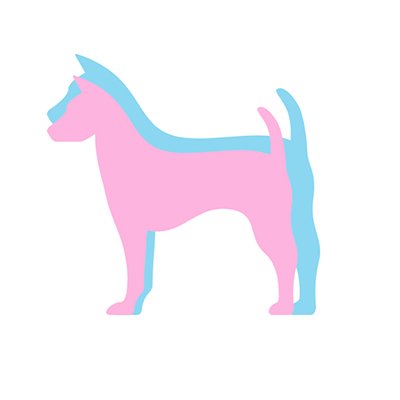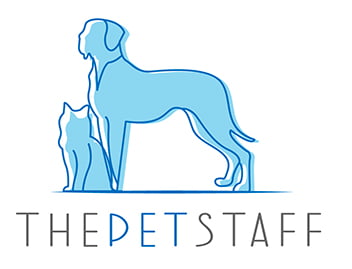King Shepherd is a big, fluffy, lovable dog that is becoming increasingly popular in the US. These German Shepherd-like dogs are full of energy for life and love for their people. The King Shepherd breed is a little more maintenance than some other breeds, so how do you know if this huge and smart dog breed is right for you?
Breed Characteristics
Temperament | Confident, intelligent, loyal, and protective |
Intelligence | High |
Affection/Friendliness | Affectionate and friendly |
Trainability | Very trainable |
Mental Stimulation | High |
Exercise Needs | High |
Apartment Living | Not recommended |
Family Friendly | Yes |
Pet Friendly | Yes |
Drooling Level | Moderate |
Energy Level | High |
Loneliness Tolerance | Moderate |
Adaptability | Moderate |
Tendency to bark | High |
The Origin of King Shepherds
King Shepherds are a relatively new dog breed, and it only dates back to the 1990s. They were specially bred to create a shepherd dog like the German Shepherd dog but with fewer health issues. The original King Shepherds were part German Shepherd and part Shiloh Shepherd (a Shiloh Shepherd is a hybrid of German Shepherd and Alaskan Malamute).
As the King Shepherd hybrid breed was developed, European German Shepherd Dogs were bred both for longer hair and to boost genetic variation in the breed. Genetic variation prevents genetic issues that come as a result of too much inbreeding in older dog breed lineages like that of German Shepherds.
Because it is such a new breed and still considered a hybrid designer breed, King Shepherd is not recognized by the American Kennel Club. However, the breed is recognized by such organizations as the American Rare Breed Association (ARBA), Eastern Rare Breed Dog Club (ERBDC), the World Wide Kennel Club (WWKC), and the European Rare Breed Dog Club.
True King Shepherds have to be a hybrid of a German Shepherd and some other large breed dog, generally something with Shiloh Shepherd or Alaskan Malamute ancestry. They are still considered to be rare dogs though they are becoming increasingly popular.

Breed Overview
Height: 26-29"
Weight: 90-150 lbs
Height: 25-27"
Weight: 75-110 lbs
Breed Group
Herding
Life Span
10-14 years
Coat
Double
Coat Length
Medium to long
Hypoallergenic
No
Shedding Level
Moderate
Size
King Shepherds are very big dogs. Males dogs grow to heights of 27 to 31 inches and can weigh anywhere from 90 to 150 pounds. Females are hardly smaller, with a height of 25-27" and weight of 75-110lbs.
Personality
King Shepherds have a particularly pleasant personality. They are friendly, calm, adaptable, and smart dogs. They are loyal without being aggressive and playful while still being gentle. There is almost nothing not to love about these lovable giants.
Appearance/Colors
King Shepherds are huge dogs that resemble German Shepherds but are much bigger. They have pointed ears and long snout-like German Shepherds, but their hair is much longer and thicker. Their fur can be straight or wavy and comes in color variations of black, white, brown, tan, gray, and silver. Because of their imposing appearance, they are often used as guard dogs.
Temperament
A King Shepherd's temperament is very even and calm provided it is trained well, socialized when young, and gets enough exercise. These intelligent and playful dogs are great with kids and are gentle with even young children and other household pets.
If they are sufficiently socialized at the puppies stage, they will also be friendly and calm around strangers. However, they do not do well by themselves and will become destructive if left alone too long.
Diet/Nutritional Needs
Due to its very large size, nutrition is particularly important for King Shepherd puppies to grow and develop healthily. A full-grown dog will eat three to four cups of food daily, but it should be spaced out into several smaller meals throughout the day to reduce the likelihood of bloating.
You will need to feed your dog high-quality food high in protein since they are such active dogs. However, you should be mindful not to overfeed your dog since the excessive weight will cause stress on your dog's joints and may lead to serious health issues.
If you have trouble knowing what to feed your King Shepherd or how much, especially as a puppy and it is growing, consult with your vet as to your dog's diet and the best way to feed your King Shepherd.
Activity/Exercise Needs
One of the biggest considerations when deciding whether a King Shepherd is for you is the amount of time you will have to dedicate to exercising your pet. King Shepherds are extremely active animals and are not low maintenance when it comes to exercise.
You will need to give them vigorous activity for at least one hour every day, and you should also strive to provide some mentally stimulating activity. This can be a tug-of-war, fetch, or hide-and-seek. You can also enroll your dog in canine sports.
King Shepherds are very intelligent and active and will easily get bored if not exercised appropriately. Bored dogs will become very destructive and could suffer from anxiety and stress.
Grooming Needs
Another of the very considerable things to know about King Shepherd maintenance is that they are not low shedders. A King Shepherd's coat is a thick double coat that must be brushed multiple times a week, if not every day, to prevent mats, tangles, and excessive shedding.
They will need professional grooming every four months to keep their dog hair trimmed and clean. You should check their ears and teeth weekly and trim their nails as needed.
Adaptability
In general, King Shepherds are an easy, adaptable breed provided they have the space to exercise. Because of this, they do not suit apartment living or inactive lifestyles. Due to their heavy coat, they do well in cold climates and do fine in hot climates, too, so long as the necessary provisions are made to keep them cool and hydrated. They can easily be trained to get along well with other pets, but they do not do well for long periods on their own.
Trainability
King Shepherds are very smart and love to please their people so training them is very easy. Being consistent and using positive reinforcement will reap the best results with this breed. You can begin as early as 8-16 weeks and should continue to maintain training throughout the dog's life. A King Shepherd puppy is very smart and will find learning new tricks and commands mentally stimulating and fun.
Life Expectancy
The life expectancy for this giant dog breed is 10-11 years, provided that it has had quality nutrition, proper care, and regular checkups throughout its life.
Potential Health Issues
King Shepherd is not overly prone to many health issues, but there are a few to be mindful of, given that it is a large breed of dog.
Elbow and Hip Dysplasia
This is the malformation of a dog's joints as they grow. It is very common in large dog breeds, so puppies require a very particular diet as they grow and form.
Von Willebrand Disease
This disease is a genetic disorder that affects blood's ability to clot.
Hypothyroidism
Hypothyroidism affects the thyroid and endocrine systems, reducing your dog's metabolic rate. This can lead to weight gain, which can lead to several other issues.
Gastric Dilatation-Volvulus (GDV or Bloat)
GDV is common in large breeds but can be treated preemptively. GDV or Bloat causes gases to expand in the stomach and then twist the stomach out of shape. The preventative care that can be looked into is a procedure that will tack the stomach down.
Where Get A King Shepherd
You may be able to find King Shepherd Rescue, many turns to breeders. If you are planning on purchasing a King shepherd, it's important to ensure the parents are registered with the American King Shepherd Club.
